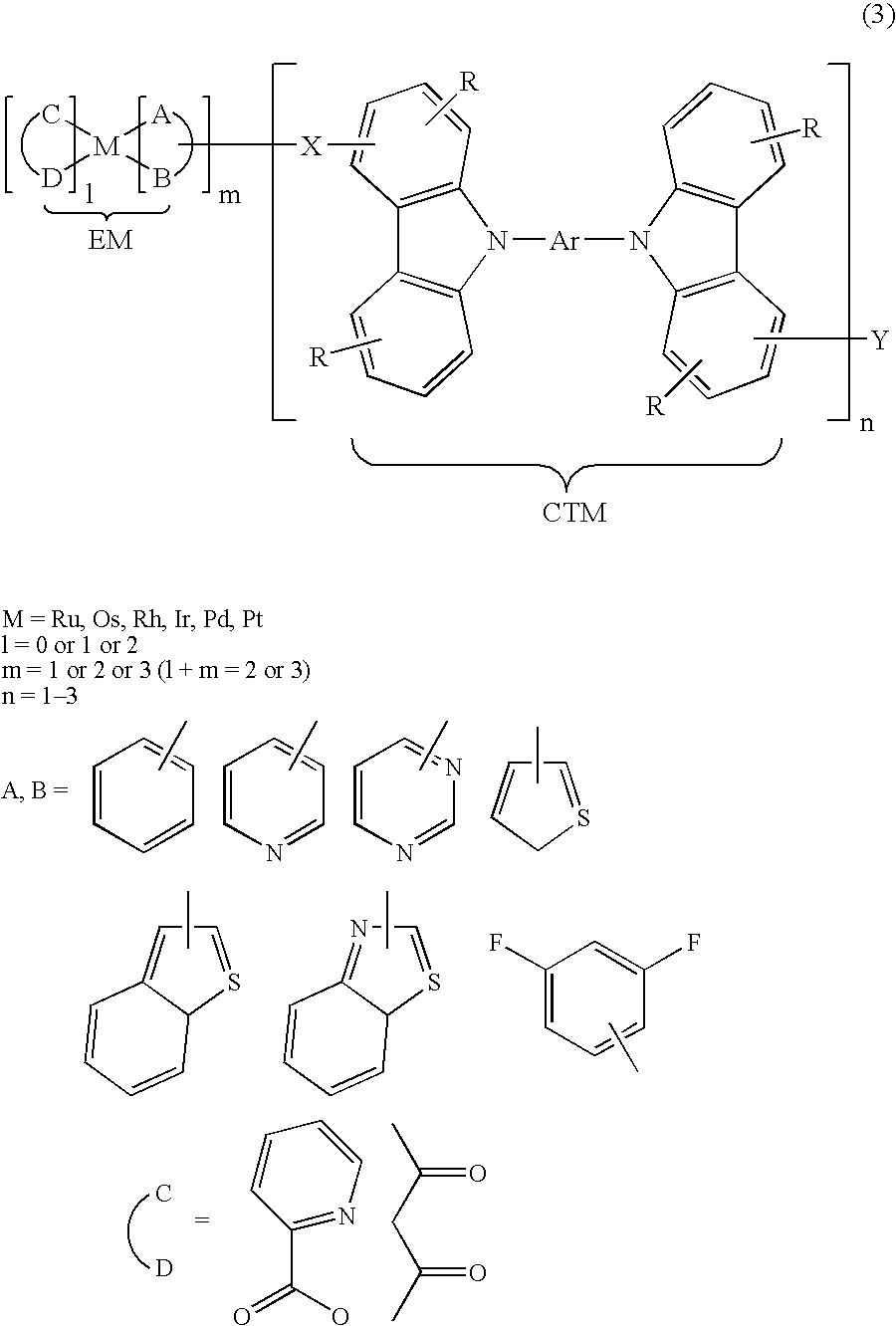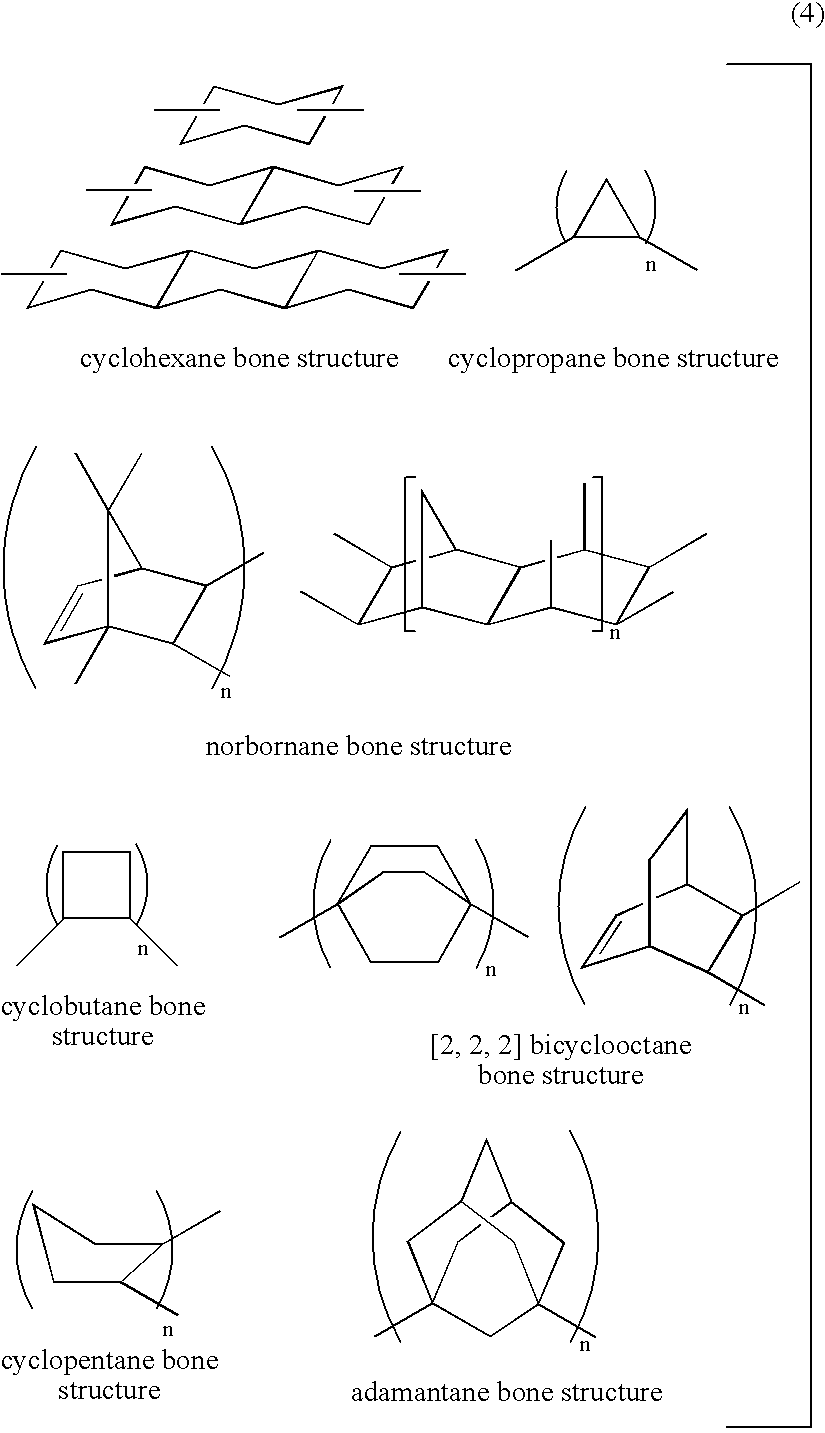Organic compound and organic electrolumiscent device
a technology of organic compounds and electroluminescent elements, applied in the direction of organic compounds of group 3/13 elements, organic compounds of group 5/15 elements, natural mineral layered products, etc., can solve the problems of insufficient luminescence properties or insufficient element life, inability to efficiently transfer energy, and inability to meet the requirements of luminous efficiency, etc., to achieve the effect of improving luminous efficiency
- Summary
- Abstract
- Description
- Claims
- Application Information
AI Technical Summary
Benefits of technology
Problems solved by technology
Method used
Image
Examples
example 1
Synthesis of Organic Compound 1 of the Present Invention
[0111] Now, there is shown an example of a method for synthesizing a compound represented by the aforementioned general formula (2) (hereinafter this compound is referred to as “the compound (2)”, as appropriate). In this example 1, in the compound (2), EM is an iridium coordination compound, X is —(CH2)6—, CTM is CBP (4,4′-bis(carbazol-9-yl)-biphenyl), Y is —(CH2)7CH3. As the reagent, the following is used without refining, including: calcium chloride, anhydrous magnesium sulfate, sodium carbonate, potassium carbonate, sodium hydroxide, which are purchased from JUNSEI CHEMICAL; anhydrous aluminum chloride, anhydrous 1,2-dichloroethane, n-butyl-lithium, 2-isopropoxy-4,4,5,5-tetramethyl-1,3,2-dioxabororan, Pd(PPh3)4, triethyl phosphite, which are purchased from ALDRICH; iridium chloride (III) trihydrate, which is purchased from Acros Organics; anhydrous ethanol, anhydrous toluene, anhydrous DMF, anhydrous chloroform, chloroform...
example 2
Synthesis of Organic Compound 2 of the Present Invention
[0127] In this example 2, in the compound represented by the aforementioned general formula (1), EM is an iridium coordination compound, X is —CH2OCH2—, and CTM is CBP. As the reagent, the following is used without refining, including: phosphorus tribromide, which is purchased from Wako Pure Chemical Industries, Ltd.; 4-(2-pyridyl)benzaldehyde, which is purchased from ALDRICH; phosphorous oxychloride, which is purchased from KANTO CHEMICAL CO., INC.; and others the same as Example 1.
[0128] 1. Synthesis of Ligand
Synthesis of 4-hydroxymethyl PPY [21]
[0129] A magnetic stirrer and 10.0 g (54.6 mmol) of 4-(2-pyridyl)benzaldehyde are put into a 100 mL recovery flask being attached with a calcium chloride tube, so that they are dissolved into anhydrous ethanol (22 mL). While cooling with ice, 1.1 g (28 mmol) of sodium borohydride is added into the flask and then stirred at a room temperature for an hour. Ice-cooled water (30 mL) is...
example 3
Synthesis of Organic Compound 3 of the Present Invention
[0137] In this example 3, in the compound represented by the aforementioned general formula (1), EM is an iridium coordination compound, X is —CH2CH2—, and CTM is CBP. As the reagent, the same as those of examples 1 and 2 is used.
[0138] 1. Synthesis of Ligand
Synthesis of Ligand, 4-PPY—CH═CH—CBP [31]
[0139] A magnetic stirrer is put into a three-necked 200 mL flask being attached with a reflux tube, and the reacting system is heated and dried under reduced pressure. Into there, 23.6 g (14.6 mmol) of 4-bromomethyl PPY [22] and 2.5 mL (14.6 mmol) of triethyl phosphite are put and then heated at 180° C. for 30 minutes. The reacting mixture in a brown oil form are cooled to a room temperature. THF (120 mL) and 672 mg of sodium hydride (55% paraffin suspension: 15.4 mmol) are added to the reaction mixture and then stirred for 15 minutes. Then, 4.8 g (9.4 mmol) of 3-formyl CBP [23] obtained by the same manner as Example 2 is added t...
PUM
| Property | Measurement | Unit |
|---|---|---|
| Electric charge | aaaaa | aaaaa |
| Solubility (mass) | aaaaa | aaaaa |
| Molecular weight | aaaaa | aaaaa |
Abstract
Description
Claims
Application Information
 Login to View More
Login to View More - R&D
- Intellectual Property
- Life Sciences
- Materials
- Tech Scout
- Unparalleled Data Quality
- Higher Quality Content
- 60% Fewer Hallucinations
Browse by: Latest US Patents, China's latest patents, Technical Efficacy Thesaurus, Application Domain, Technology Topic, Popular Technical Reports.
© 2025 PatSnap. All rights reserved.Legal|Privacy policy|Modern Slavery Act Transparency Statement|Sitemap|About US| Contact US: help@patsnap.com



